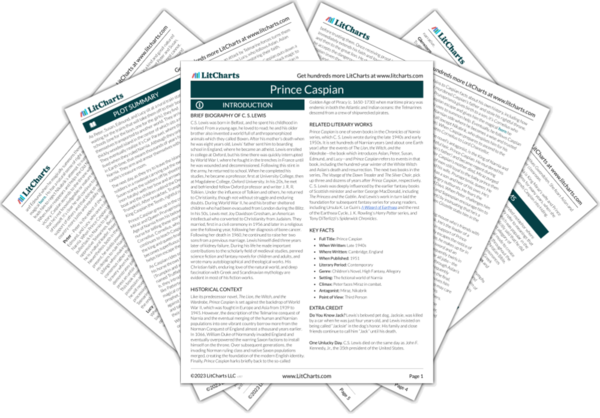AI ToolsNew
Tools to make learning and teaching easier
Prince Caspian Study Guide |
Next
Summary
|
Welcome to the LitCharts study guide on C. S. Lewis's Prince Caspian. Created by the original team behind SparkNotes, LitCharts are the world's best literature guides.

Do You Know Jack? Lewis’s beloved pet dog, Jacksie, was killed by a car when he was just four years old, and Lewis insisted on being called “Jacksie” in the dog’s honor. His family and close friends continue to call him “Jack” until his death.
One Unlucky Day. C.S. Lewis died on the same day as John F. Kennedy, Jr., the 35th president of the United States.